NO. 54
WASHINGTON, DC —On October 4, 2019, the American Hellenic Institute (AHI) hosted a Noon Forum at Hellenic House to commemorate the 97th anniversary of the Smyrna Catastrophe in Asia Minor. Addressing a full house, Professor Ismini A. Lamb, director of the Modern Greek Studies Program at Georgetown University, presented the topic: “Correcting Three Popular Misconceptions about the 1922 Catastrophe in Smyrna.”
“Sadly, the tragic events of August and September 1922, in which countless Greeks of Asia Minor were murdered, occurred during the era of the Armenian genocide and the broader genocidal campaign against Greeks, Pontians, Assyrians, and other Christian communities,” AHI President Nick Larigakis said during introductory remarks. “The once robust city of Smyrna, which at the time was a thriving center of Greek culture, was obliterated. The catastrophic events of 1922 are important to commemorate because they remind us of man’s continuing inhumanity to man.”
AHI Board Member James Marketos, Esq., introduced Professor Lamb, who is currently researching a biography of George Horton, U.S. Consul-General in Smyrna from 1919 to 1922 and author of The Blight of Asia.
Lamb’s presentation was based on the fruits of her research and recent scholarship by others, including Benny Morris and Dror Ze’evi’s 2019 book, The Thirty-Year Genocide: Turkey's Destruction of Its Christian Minorities, 1894-1924.
Lamb identified and challenged three misperceptions about Smyrna’s occupation by Greek forces from 1919 until 1922, arguing that:
The Greek occupation of Smyrna was not an act of aggression that gave rise to the Turkish Nationalist movement and led to the persecution of Christians;
Subsequent Greek and Turkish atrocities were not equivalent in scope, intensity or intent; and
Anyone making these points is not automatically an “anti-Turkish bigot.”
Professor Lamb briefly reviewed five aspects of the international context prior to the Greek occupation of Smyrna in 1919 before presenting her challenges to the three misperceptions.
Myth #1: Greek occupation gave rise to Turkish nationalism
Lamb contended that the Greek occupation of Smyrna was not an act of aggression. Her research indicates it was duly authorized by competent authority, consistent with international norms on war termination, and in accordance with the terms of Turkey’s surrender agreement. The Greeks were sent because the Italians forced their other Allies’ hands. The occupation was also permitted under the Mudros armistice, which the Turks were already violating. The persecution of Anatolian Christians by Turkish nationalists was underway months before the Greek occupation, she said. The occupation itself did not precipitate this conduct.
Myth #2: Atrocities committed by Greeks are equivalent
According to Lamb, George Horton considered the “50-50 theory” -- that Greek and Turkish atrocities were roughly equal -- preposterous. To him, Lamb said, the sheer disparity in power between the Ottoman authorities and their Christian subjects made the theory untenable. Lamb pointed out that Morris and Ze’evi, who reviewed allegations of Greek atrocities in detail, reached the same conclusion as Horton. Lamb also observed that Morris and Ze’evi found a major difference between the Greeks and Turks on the crucially important question of intent. In short, the Greeks punished perpetrators of atrocities while the Turks rewarded them.
Myth #3: Anyone making these points must automatically be anti-Turkish bigot
In some circles, Lamb explained, George Horton was condemned as an “anti-Turkish bigot.” Based on her extensive research, however, she concluded that Horton was nothing of the sort. Instead, she said, Horton sought a non-nationalistic future for Turkey, believing that Turkey would be better off with an ethnically and religiously diverse population with common rights, civil liberties, and representative government.
“Throughout his career he helped Muslims in need, including Turks, and admired some aspects of Turkish culture, particularly their heroic stoicism,” Lamb said. “But, when Turks were whipped into a frenzy of Christian massacres by their leaders, Horton called them out for it, even though doing so effectively ended his diplomatic career. The best, most recent scholarship now agrees with Horton’s conclusions about the scope, intensity and intent of Turkey’s persecution of its Christian minorities.”
Remarking on the similarity of her own experience to Horton’s, Lamb shared that she herself has been the object of name-calling and a failed effort to get her fired from Georgetown University.
Following Professor Lamb’s presentation, President Larigakis moderated a Q&A session and offered closing remarks. Before the Q&A, Lamb shared recent experiences of where she has been the subject of name-calling and a campaign to get her fired from Georgetown University, which failed.
About Professor Ismini Lamb
Ismini Lamb is the Director of the Modern Greek Studies Program at Georgetown University where she teaches all levels of Modern Greek language and a wide range of interdisciplinary courses on Greek culture, including courses on Media & Film, Byzantine History & Civilization, The Orthodox Faith and Greek Business Culture. The Modern Greek Studies Program cultivates student appreciation of the Greek language and culture and highlights its continuity from antiquity to the present. Ismini has been with the Program for over 27 years, educating future leaders in the nation’s capital. She is a Doyle Faculty Fellow and a former C.S. Lewis fellow. Her research interests include the influence of political ethos and media on Greek national identity and expression, Modern Greek reception studies, national and ecumenical Hellenism and social and humanitarian issues in contemporary Greece, particularly with the advent of the financial and refugee crises. A recent an article on the latter subject in Duke University’s Mediterranean Quarterly is entitled: “The Gates of Greece: Refugees and Policy Choices.” Currently she is writing a biography of George Horton, the American philhellene, classicist, author, diplomat, ethnographer, and humanitarian activist.



